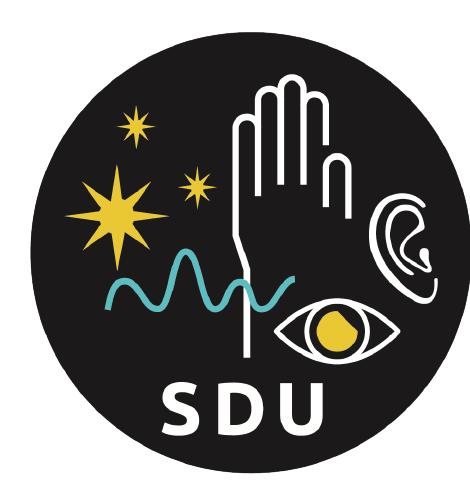Gravitational Waves
Until recent history, all of astronomy was based solely on the light we could gather from the universe and our interpretation of that light. That has changed with the introduction of gravitational wave astronomy. Einstein's Theory of Relativity asserts that a change in gravitational field will propagate through the universe at the speed of light. These changes in gravitational field are called gravitational waves. They carry information about the motions of objects in the universe.
Over the past couple of decades, cutting edge technology to detect gravitational waves has been developed. The result is LIGO, the Laser Interferometer Gravitational-wave Observatory. LIGO consists of two widely-separated interferometers within the United States - one in Hanford, Washington and the other in Livingston, Louisiana - operated in unison to detect gravitational waves. Each instrument is L-shaped, and composed of two 4 kilometer long vacuum tunnels, a laser, and a series of mirrors. Gravitational waves cause space itself to stretch in one direction and simultaneously compress in a perpendicular direction. This means that while a gravitational wave is passing, one arm of the LIGO instrument would get longer while the other gets shorter, so that the laser light must travel unequal distances between the two arms. In practice, the difference in arm-length caused by a gravitational wave is about 10,000 times smaller than the width of a proton. Achieving this level of precision is a mind-boggling feat of engineering. LIGO's success has unlocked a new branch of astronomy and pushed humans closer to understanding the universe. To learn more about the LIGO project, we encourage you to visit their website.
First Detection
On September 14th, 2015, LIGO released evidence of their first detection. They observed gravitational waves from the merger of two black holes, each about 30 times the mass of our sun. The event was so incredibly powerful; it is estimated that in just fractions of a second it released 50 times more energy than all the stars in the observable universe.
Below is a sonified video of the detection. The observed "chirp" occurs as the black holes spiral closer and closer together and the frequency of the gravitational wave increases. During the 12 second video, the chirp is played 8 times. In the first two runs, the frequency of the sound exactly matches the frequency of the gravitational waves. In the second two runs, the sound wave frequencies are adjusted to better match the human hearing range. This pattern is then repeated in the next four runs.
Detection with Electromagnetic Counterpart
On October 16, 2017, LIGO announced their first detection of gravitational waves from an inspiraling binary neutron star. Notably, electromagnetic emission in multiple wavelength bands was observed from the collision alongside gravitational waves. This is the first time a cosmic event was observed with both gravitational waves and light.
In the below video, the gravitational wave signal "chirp" can be heard, followed by a "ding" that corresponds to the gamma ray burst observed from the neutron star merger.
The content of this page came from the LIGO website.

